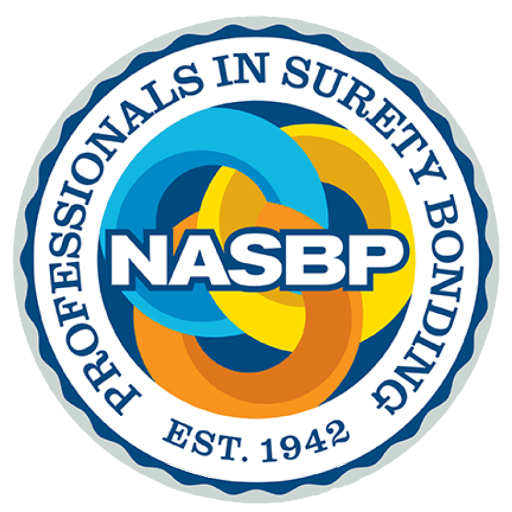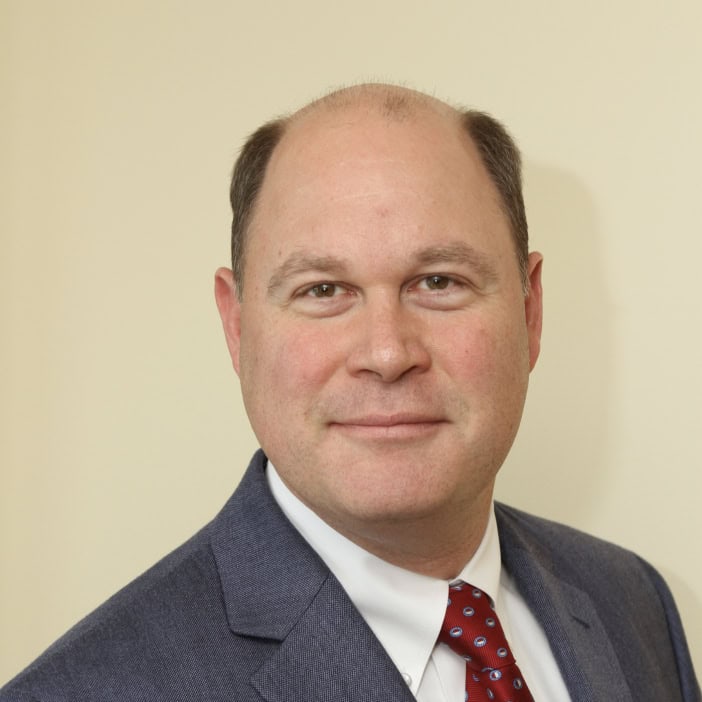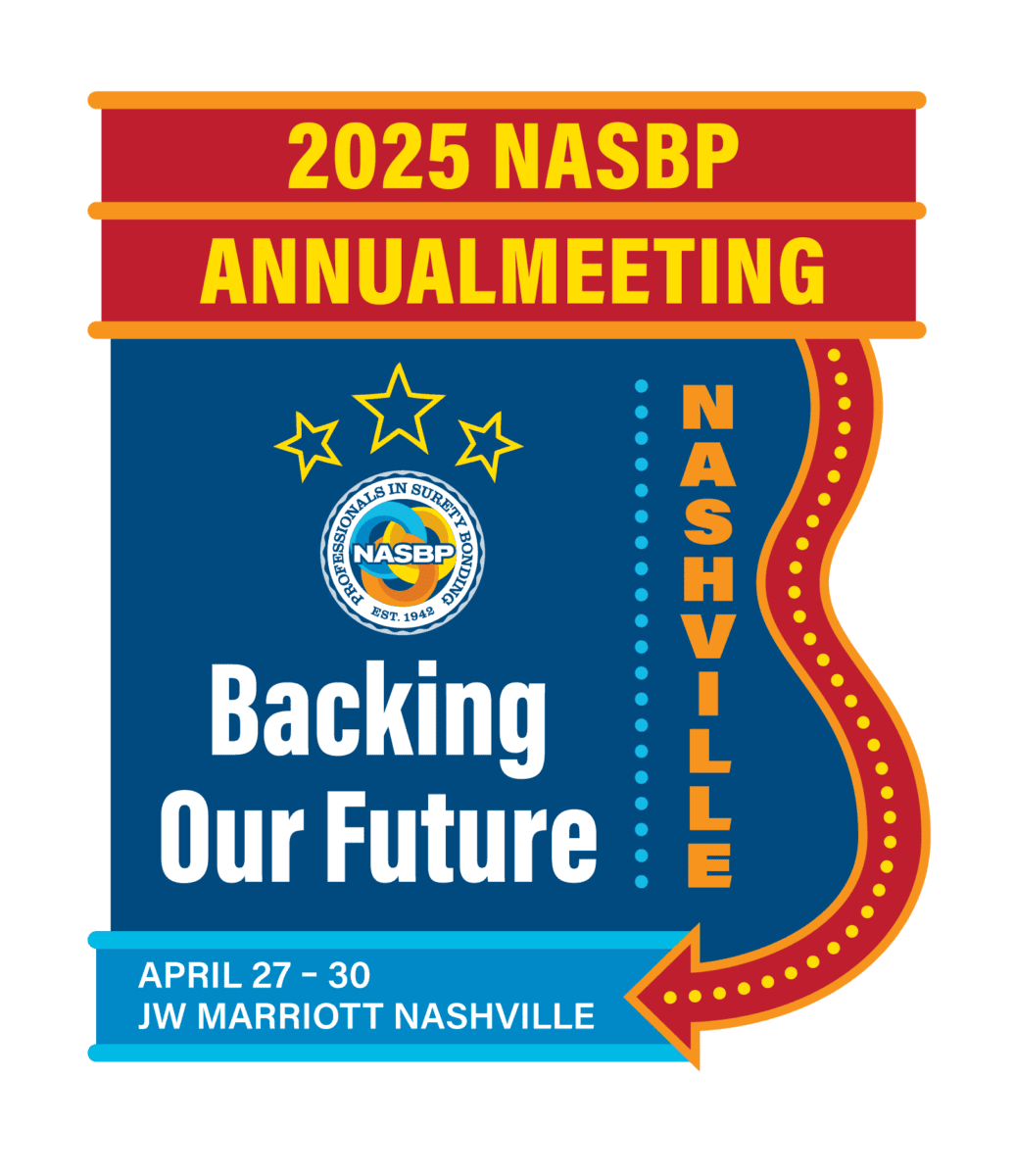January / February 2008
|
||||||||||||||||||||||||||||||||||||||||||||||||||||||||||||||||
|
The NASBP William J. Angell Schools are one of the association’s most successful and long-term initiatives. Not surprisingly, the January/February 2008 Schools were another sold-out offering, revealing the increasing demand for the high quality education provided at the Schools. More than 130 students and faculty participated. Click here for article with pictures. Many who were wait-listed for the January/February Schools have registered for the expanded 2008 Summer Schools, which now also are full and have a wait-list. It is easy to see that to continue to meet the industry’s educational demands, NASBP must undertake an effort to attract more volunteers to serve as faculty members.Let me introduce you to the current faculty, which is drawn from both our member and affiliate ranks and who take a precious week away from their “real jobs” to volunteer their time to teach others. These selfless volunteers demonstrate a singular dedication to educating surety professionals, and their commitment makes manifest the very essence of what makes our industry so special.
The Level I Surety School instructs students on the basics of the business. The Level I faculty—Matt Cashion, Earl Benton, Tom Padilla, and Dave Castillo—actively engage students by probing and questioning students in ways to make sure they understand the subject matter of the program and are able to fully participate in the industry as capable and competent surety professionals. In addition, Lordes Landa observes and assists the Level I instructors as she prepares to make the commitment to join the core faculty of the School. The Level II is for the more experienced surety professional. The Level II faculty—Bob Shaw, Jim Lareau, Ed Heine, Ralph Pulver, and Jack Curtin—challenge these more experienced students to deepen their understanding of the business. They are joined by Paul Amstutz who shares his considerable insights and experience on Commercial Surety. I had the opportunity to share my thoughts about the importance of professional ethics. Other faculty Tom Padilla, Larry McMahon, Bud Herndon, Tom Durkin, Jack Curtin, and Dave Castillo lead the students through the capstone of the School—the Surety Case Study. As the chairman of the Professional Development Committee, Tom Padilla does a terrific job providing leadership to the faculty and keeping everyone rowing in the same direction. In accordance with the Schools’ custom, Jack Curtin holds court at the graduation dinner and captivates students with his colorful stories and historic perspective of the surety industry. If you ask each of these faculty members why they contribute their time to this mission, each will quickly relate to you the tremendous amount of personal and professional satisfaction they reap from their participation. Helping students develop a better understanding of the fundamentals of our business and what it takes to be a successful surety professional in today’s business climate elevates the overall professionalism of our industry. They also reap the dividend of being part of a process where they help and witness the affirmation of career choice and the formation of collegial friendships. In my opinion, there is no higher calling than helping your industry by educating and mentoring the leaders of tomorrow. However, in order for the NASBP William J. Angell Surety Schools to continue to deliver this unparalleled educational experience and to keep up with the considerable demand for it, we not only need to support the current faculty with our recognition, but consider encouraging those who indicate interest in becoming a future faculty member. If you have an interest in becoming a faculty member for the William J. Angell Surety Schools, please contact Ann Latham at alatham@nasbp.org for more information. By finding and encouraging the next generation of educators, we will be prepared with the resources needed to shape tomorrow’s industry leaders, and keep alive the legacy of excellence set by the William J. Angell Schools. Sarah Finn is National Surety Senior Vice President of IMA of Colorado, Inc. in Denver, Colorado. She can be reached at sarah.finn@imacorp.com. |
||||||||||||||||||||||||||||||||||||||||||||||||||||||||||||||||
 |
||||||||||||||||||||||||||||||||||||||||||||||||||||||||||||||||
| Appropriating lyrics from a well-known Willy Nelson song seems a fitting way to characterize producer concerns over the current situation surrounding the A312 payment bond form. I have received a number of phone calls and e-mails from members as they wrestle with managing the reactions of sureties to adverse judicial decisions in Maryland, Virginia, and Florida construing Paragraph 6 of the American Institute of Architects (AIA) A312 payment bond form. Understandably concerned, many sureties have responded with individually-tailored modifications to A312 and have indicated, in many instances, that they are reticent to write unmodified A312 payment bonds.Of course, A312 has been around for quite some time, being first published in 1984, and has been institutionalized in the procurement systems and procedures for many local public owners and private owners. These owners may not be aware of or understand the concerns of the surety community with the form and may be resistant to or refuse entirely any modifications, especially when no such bond modifications were requested in the past. In the current environment, producers often are being placed in difficult situations, such as when a long-term, qualified client is desirous of bidding a job where the local public owner mandates an unmodified A312 but the client’s surety refuses to write it or keeping straight the different surety company modifications to A312 to ensure no inadvertent errors or omissions. Clearly, no one is or should be satisfied with the current situation.
To address concerns, NASBP has taken immediate action through education and advocacy efforts. Hopefully, you were able to listen to the recent NASBP teleconference with Ted Baum, an attorney with the Rochester, NY law firm of Ernstrom & Dreste LLP, who provided an excellent rundown of the legal decisions that have triggered this crisis. An audio recording of the teleconference is available to members and affiliates in the password-protected section of the NASBP web site. Click here Beyond educational efforts, NASBP has pursued a substantive dialogue with AIA, which, at the request of NASBP, convened an in-person meeting among myself, Edward Gallagher, General Counsel of The Surety & Fidelity Association of America, Suzanne Harness, Managing Director of the AIA Documents Program, and Howard Goldberg, an attorney in the Baltimore, MD law firm of Goldberg, Pike & Besche, PC and outside counsel to the AIA Documents Program, on February 27. The purpose of the meeting was to convey to AIA the import of the situation for producers and for sureties, to assess AIA’s ability to expedite its revision process for A312 and, if for political, practical, or other reasons AIA was not able to expedite revision of A312, to seek an interim or “stopgap” measure through the issuance by AIA of a standardized amendment to the A312 payment bond form. From the outset of the meeting, AIA representatives made clear that they understood the gravity of the situation and wished to work productively with NASBP and SFAA in an effort to address concerns with the A312 payment bond. AIA representatives stated that working towards a “stopgap” amendment likely would be the most expeditious means to mitigate the immediate situation, and they would review proposed amendment language forwarded from SFAA that represents a consensus position among SFAA member companies and, in short order, would convene follow-up meetings toward the goal of developing the “stopgap” amendment. They also indicated that they believe that maintaining the original revision cycle for A312 is important and ultimately beneficial to the construction and surety communities as AIA intends to review the substance of both the payment and performance bonds contained in A312 as well as review the merits of other bond approaches, such as bonds predicated on the federal Miller Act. My personal thanks to Suzanne Harness and Howard Goldberg for appreciating the concerns of the surety community and making a commitment to look for means to address them. |
||||||||||||||||||||||||||||||||||||||||||||||||||||||||||||||||
| These materials are provided to NASBP members solely for educational and informational purposes. They are not to be considered the rendering of legal advice in specific cases or to create a lawyer-client relationship. Readers are responsible for obtaining legal advice from their own counsels, and should not act upon any information contained in these materials without such advice. | ||||||||||||||||||||||||||||||||||||||||||||||||||||||||||||||||
|
Online career centers are fast becoming a preferred means to find employment by today’s job seekers. In view of that, NASBP sought to develop such a center for the surety industry and is actively promoting its NASBP Career Center to qualified professionals seeking employment opportunities.NASBP believes in the unique value of the NASBP Career Center as an online recruitment resource to the surety community. Through online advertising and other online efforts NASBP seeks to inform those professionals interested in employment possibilities about the Center.
Operating for only three months, the NASBP Career Center is already making a difference for employers. NASBP members and affiliates who post their positions to the NASBP Career Center are finding that the Career Center is an effective recruiting tool. North American Specialty Insurance Company’s Vice President of Commercial Surety, Kay Hull stated, “The Career Center was incredibly easy to use.” Hull related, “We have a new Commercial Surety Underwriter that saw our job posting and contacted us; I’m happy to say Teri started in our Cedar Rapids office in February.” Today’s workforce demographic increasingly uses job boards like the NASBP Career Center in their job searches. A well-known human resources consultant, Peter Weddle, in a recent article, talks about why today’s job boards are appropriate in attracting job seekers. According to Weddle, if you put 100 recruiters in a room and ask them to identify the best talent in the workforce, 99 will point to passive job seekers. Weddle says: “The problem, of course, is that passive job seekers aren’t job seekers at all. At best, they are prospects. They don’t act like active job seekers, nor are they motivated in the same way. More often than not, they have to be dragged…into [the] recruiting processes. Then, they have to be persuaded and cajoled into even considering [the positions]. In short, they are [hard to recruit]. So, it’s appropriate to ask why even bother with them? Why not focus on people who really do want to come to work for our employers?” Acknowledging just how difficult passive prospects can be, Weddle thinks we must not only recruit them, we must make them our priority. Why? Click here for Weddle’s four reasons. To view a list of benefits members and affiliates receive when they utilize the NASBP Career Center, click here. For information about member and affiliate rates to post positions on the Career Center, click here. |
||||||||||||||||||||||||||||||||||||||||||||||||||||||||||||||||
|
For the first time since its debut in the fall, ConsensusDOCS™ is making samples of its library of more than 70 ConsensusDOCS™ documents available for free in pdf format. ConsensusDOCS™ documents incorporate industry best practices in a new generation of documents covering all of the major construction party agreements including general contracting (design-bid-build), design-build, and construction and program management.NASBP is one of more than 20 construction and surety organizations to participate in ConsensusDOCS™, an unprecedented effort to identify and incorporate industry best practices in a new generation of consensus standard form documents.
NASBP President Sarah Finn said, “This easy access to the samples helps us and our contractor and subcontractor clients to quickly become familiar with the risk allocation and insurance provisions in the ConsensusDOCS™ documents. With a greater understanding of the ConsensusDOCS™ forms, our clients can make more informed decisions and choose the appropriate documents for their projects,” Finn added. Recently, NASBP members and affiliates have had interest in the following ConsensusDOCS™ documents: 1. tri-party collaborative agreement (ConsensusDOCS 300), Click here for a brief summary of the rest of the library of ConsensusDOCS forms, or download a list of the documents titles by clicking here. ConsensusDOCS™ forms can be purchased in electronic format at www.ConsensusDOCS.org through a subscription or a la carte system, called Meter Mode. NASBP members and affiliates can receive a discount of up to 20% when they enter the code NASBP400 when prompted during the purchasing process from the ConsensusDOCS™ web site. Instructions how to access the free samples of the ConsensusDOCs documents are provided below. Directions how to download free ConsensusDOCS™ samples:
|
||||||||||||||||||||||||||||||||||||||||||||||||||||||||||||||||
The William J. Angell Level I and II Winter Surety School classes were at maximum capacity again this year! Our esteemed faculty teams: Level I ~ Matt Cashion/Erle Benton, Tom Padilla/Dave Castillo and Level II ~ Bob Shaw/Jim Lareau and Ed Heine/Ralph Pulver, in addition to Paul Amstutz conducting the Commercial Surety session, all shared their expertise with students from around the country. Additional faculty participating in the School were Jack Curtin, Larry McMahon, Lourdes Landa, Bud Herndon, Tom Durkin and current NASBP President Sarah Finn.
For the first time, the Level I Red Team had two recipients of the Most Outstanding Student award. The football went to Jimbo Ramsay of The Cashion Company in Little Rock, AK and Ebony Johnson of the Insco/Dico Group in Greenwood, CO. The Level I Yellow Team’s Most Outstanding Student was Idan Gadidi of First Sealord Surety in Villanova, PA. Level II Blue Team’s Outstanding Student was Christopher Rea of Six & Geving in Colorado Springs, CO. The Green Team’s Outstanding Student was Will Mingram of Bond Services of California in Los Angeles, CA. Photos of award recipients who were present are below. Congratulations to all graduating students and our thanks to an outstanding faculty for sharing their time and talents!
|
||||||||||||||||||||||||||||||||||||||||||||||||||||||||||||||||
|
Private company financial statement users and preparers can express their concerns about Accounting for Uncertainty in Income Taxes, the Financial Accounting Standards Board (FASB) Interpretation No. 48 (FIN 48) compliance by completing an online survey by Tuesday, March 18th.The Private Company Financial Reporting Committee (PCFRC) is conducting the survey to better reveal the costs and benefits of complying with the requirements of the accounting standard, FIN 48. The accounting standard also applies to pass-through entities, such as S-corporations, partnerships, and LLCs. The survey results will be used also to help the PCFRC develop any further recommendations to the FASB about FIN 48.
The PCFRC, formed by FASB and the American Institute of Certified Public Accountants, provides recommendations to the FASB. FASB sets accounting standards for privately-held enterprises. Users and prepares may complete the survey by clicking on one of the surveys below by Tuesday, March 18th. 1) “Users” of private company financial statements, click here. Questions, contact Robert Durak, Private Company Financial Reporting, AICPA – (212) 596-6170,1211 Avenue of the Americas, Floor 19,New York, NY 10036. http://www.aicpa.org
|
||||||||||||||||||||||||||||||||||||||||||||||||||||||||||||||||
NASBP’s political action committee, the SuretyPAC, has raised more than $18,000 to date for the 2007/2008 election year. SuretyPAC is the only federal PAC that is 100% devoted to representing the surety industry and establishing and nurturing relationships with candidates running for congressional office. During the 2005/2006 election year, NASBP contributed $13,000 to the following U.S. Congressional candidates.
SuretyPAC disbursements are made based on the NASBP SuretyPAC bylaws. Click here for more information about the SuretyPAC.
|
||||||||||||||||||||||||||||||||||||||||||||||||||||||||||||||||
The U.S. 2008 General Election is Tuesday, November 4th. Now is the time to make sure that you are registered to vote and to make arrangements to vote in advance if you will be out of town. Click here for voter registration and polling information and to make arrangements to vote early or by mail. Evidence proves that a single vote does make a difference in an election outcome. Below are some examples of when just a few votes won an election:
Even a small percentage makes a difference. Do you think that a 2% increase in votes doesn’t sound like much? With 2% more votes, Bush would have won Wisconsin, New Mexico, Iowa and Oregon in 2000. With 2% more votes, Gore would have won Florida and New Hampshire. 2% also would have made a big difference in these key battleground states, producing the following outcomes: Missouri Michigan Wisconsin Arizona Nevada Washington
|
||||||||||||||||||||||||||||||||||||||||||||||||||||||||||||||||
The Department of the Treasury’s Listing of Approved Sureties (Department Circular 570) as of July 2, 2007 has been updated to reflect:
The Department of Treasury’s List of Accredited/Trusteed Reinsurers as of October 30, 2007 has been updated to reflect:
For a complete listing of all states where these companies are licensed to transact surety business, please refer to the Circular 570 and its supplements at: http://fms.treas.gov/c570/c570.html |
||||||||||||||||||||||||||||||||||||||||||||||||||||||||||||||||
|
NASBP welcomes the following new members and affiliates who have joined the Association since the last issue of Pipeline.Members
C&H Agency CL Frates and Company Crichton Brandon Jackson & Ward HRH Metro Northeast, LLC JM Strange & Company JP West Inc. Sterling Risk Advisors Affiliates Financial Pacific Insurance Co. Trisura Guarantee Insurance Company |
||||||||||||||||||||||||||||||||||||||||||||||||||||||||||||||||
|
Whereas: Private project owners often underestimate the value and benefits of contract surety bonds;Whereas: Private project owners often overestimate the cost of surety bonds;
Whereas: Construction lenders may not be aware of how surety bonds can benefit and protect their lending capital; Whereas: Private project owners and lenders may not fully understand how bank letters of credit or subcontractor default insurance differ from surety bonds; Whereas: Private project owners and lenders may not be aware of the surety’s rigorous prequalification process, that contractors are unwilling to divulge confidential financial details to owners and lenders, and the time and expense associated with prequalifying contractors on their own; Whereas: Private project owners may believe that working with the same contractor for many years provides all the protection they need; Whereas: Contractors fail or go out of business at a rate of 23.6% and that financial issues, management issues, unrealistic growth/overexpansion, and uncontrollable issues are factors that contribute to contractor failure; Whereas: The private construction sector offers the most potential for growth in surety bond premium written; Therefore be it resolved: The Surety Information Office (SIO) makes promoting contract surety bonds to private owners and lenders easy by offering free PowerPoint® presentations, brochures, and CDs via www.sio.org, or by contacting SIO at (202) 686-7463 or sio@sio.org. |
||||||||||||||||||||||||||||||||||||||||||||||||||||||||||||||||
Get Important Surety Industry News & Info
Keep up with the latest industry news and NASBP programs, events, and activities by subscribing to NASBP Smartbrief.


 to listen to the audio recording of the NASBP teleconference.
to listen to the audio recording of the NASBP teleconference.






